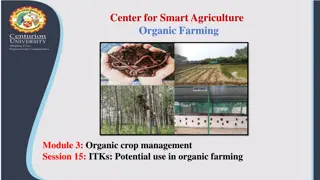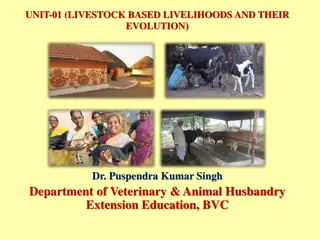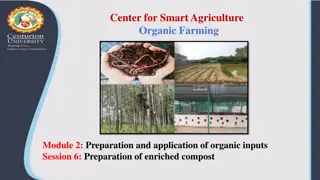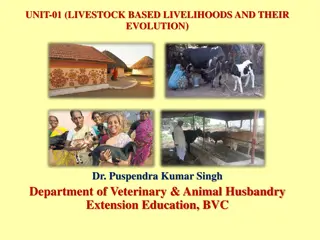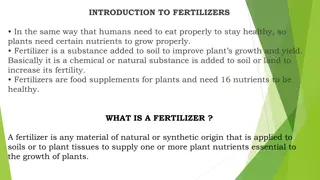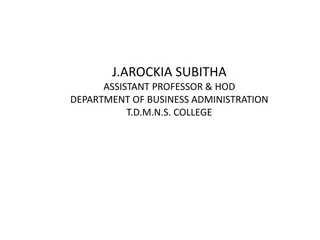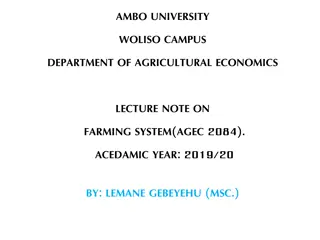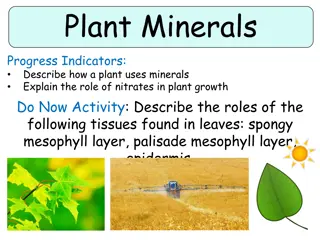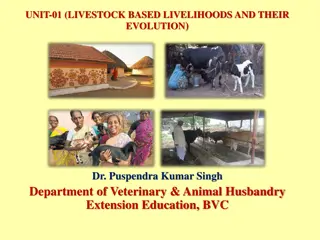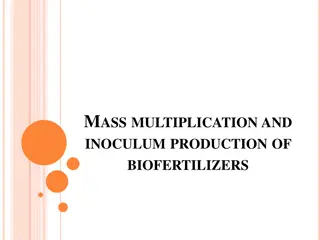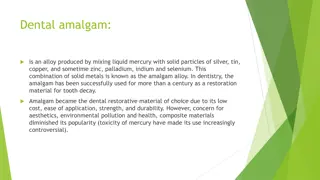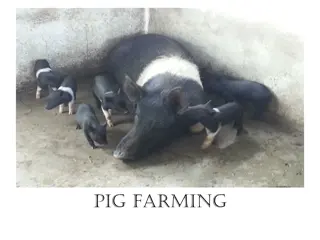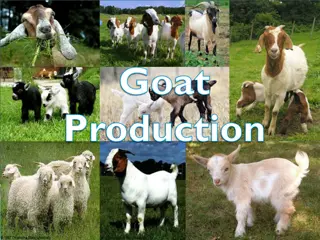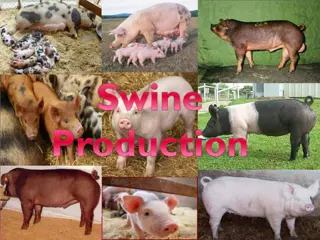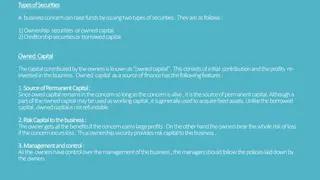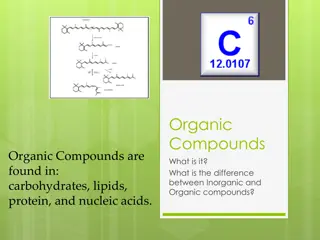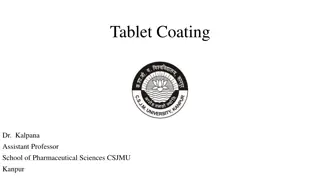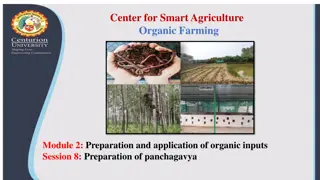Understanding Green Manuring in Organic Farming: Types, Advantages, and Disadvantages
Green manuring involves incorporating green plant tissues into the soil to enhance fertility and structure. This method includes types like in-situ and green leaf manuring. Desirable qualities of a good green manuring crop are quick growth, nutrient fixation, and deep root systems. Advantages include soil improvement, nutrient availability, and erosion control. However, disadvantages such as moisture depletion, crop loss, and pest issues should be considered.
Download Presentation

Please find below an Image/Link to download the presentation.
The content on the website is provided AS IS for your information and personal use only. It may not be sold, licensed, or shared on other websites without obtaining consent from the author. Download presentation by click this link. If you encounter any issues during the download, it is possible that the publisher has removed the file from their server.
E N D
Presentation Transcript
Center for Smart Agriculture Organic Farming Module 2: Preparation and application of organic inputs Session 4: Green manuring: Types, advantages, disadvantages
Green Manuring It is a practice of ploughing in the green plant tissues grown in the field or adding green plants with tender twigs or leaves from outside and incorporating them into the soil for improving the physical structure as well as fertility of the soil. It can be defined as a practice of ploughing or turning into the soil, undecomposed green plant tissues for the purpose of improving the soil fertility. The objective of green manuring is to add an organic matter into the soil and thus, enrich it with N which is most important and deficient nutrient.
Types of Green manuring Green manuring in-situ: When green manure crops are grown in the field itself either as a pure crop or as intercrop with the main crop and buried in the same field, it is known as Green manuring In-situ. E.g.: Sannhemp, Dhaicha, Pillipesara, Shervi, Urd, Mung, Cowpea, Berseem, Senji, etc. Green leaf manuring: It refers to turning into the soil green leaves and tender green twigs collected from shrubs and tress grown on bunds, waste lands and nearby forest area. E.g.: Glyricidia, wild Dhaicha, Karanj.
Characteristics/desirable qualities of a good green manuring crop: Yield a large quantity of green material within a short period. Be quick growing especially in the beginning, so as to suppress weeds. Be succulent and have more leafy growth than woody growth, so that its decomposition will be rapid Preferably is a legume, so that atm. N will be fixed. Have deep and fibrous root system so that it will absorb nutrients from lower zone and add them to the surface soil and also improve soil structure. Be able to grow even on poor soils.
Advantages of Green manuring 1. It adds organic matter to the soil and simulates activity of soil micro- organisms. 2. It improves the structure of the soil thereby improving the WHC, decreasing run-off and erosion caused by rain. 3. The G.M. takes nutrients from lower layers of the soil and adds to the upper layer in which it is incorporated. 4. It is a leguminous crop, it fixes N from the atmosphere and adds to the soil for being used by succeeding crop. 5. It increases the availability of certain plant nutrients like P2O5, Ca, Mg and Fe.
Disadvantages of Green manuring 1.Under rainfed conditions, the germination and growth of succeeding crop may be affected due to depletion of moisture for the growth and decomposition of G.M. 2.G.M. crop inclusive of decomposition period occupies the field least 75- 80 days which means a loss of one crop. 3. Incidence of pests and diseases may increase if the G.M. is not kept free from them. 4.Application of phosphatic fertilizers to G.M. crops (leguminous) help to increase the yield, for rapid growth of Rhizobia and increase the P availability to succeeding crop.




